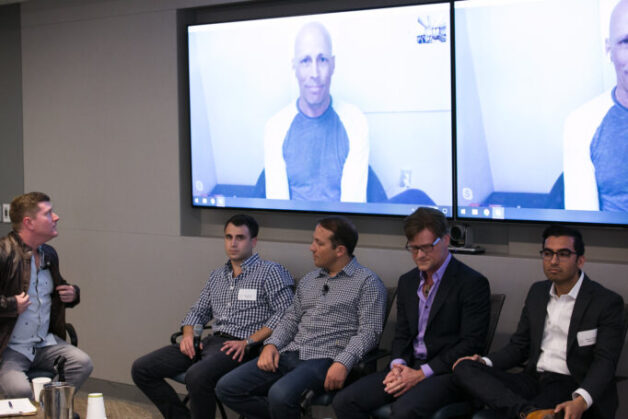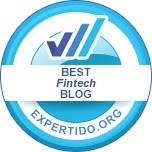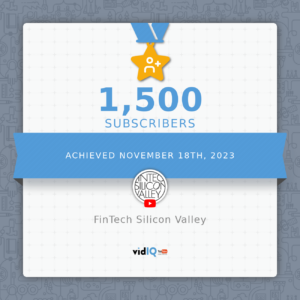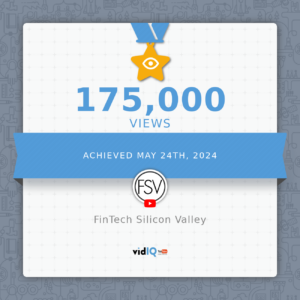Over the last several months, Bitcoin as well as blockchain and cryptocurrency stocks have been on a volatile ride. While investors have experienced huge gains, there were also some significant losses.
However, some areas of the crypto landscape seem to show real promise. There are smart contracts and decentralized platforms like Ethereum that have potential for real-world applications. In fact, ETH has become the platform of choice for digital assets connected to Initial Coin Offerings (ICOs).
An Evolution in Options For the Blockchain
We are now witnessing the emergence of tokenized assets. Organizations are converting particular assets into digital tokens, which are placed on a blockchain. We first started to see this idea increase in popularity when Ethereum gave its tokens out in exchange for assets that were used to build the platform.
So began the journey toward a process for subdividing or transferring certain assets like real estate, company profits, energy, gems and minerals, stocks, carbon credits and more. The evolution of the sharing economy, combined with the migration of commodity exchanges to electronic transactions have stimulated the development of tokenized assets.
The first stage of this new type of investing has involved considerable experimentation. Everything from collectible cars to artwork have been funded with tokens. The concept of the securities token has opened up opportunities where if you can imagine it, the token can be used for that asset or application.
The possibilities have expanded to include exchanging tokens for a slice of an investment fund’s pie. From there, peer-to-peer exchanges and digital wallets have appeared as various solutions for managing the tokenized assets in a way that investors can feel more secure with this new take on the capital market.
Yet, challenges remain, including regulatory and infrastructure issues. I moderated a panel at FinTech Silicon Valley that included a diverse group of experts on cryptocurrency and tokenized assets. The lively discussion and debate examined what must change in order to establish a modern capital market for these assets where any type of investor can feel comfortable participating.
Benefits and Risks of Tokenized Assets
The transparency, security, and functionality of tokenized assets is perhaps less of an issue for accredited investors or those working within the cryptocurrency world. There’s a benefit in what looks like the creation of new investment opportunities for a larger pool of people.
However, many are afraid to use something that isn’t fully regulated and lacks clarity around compliance. There are also concerns that valuations are inflated or unstructured. And, the systemic risk doesn’t seem worth it to certain investors, especially with headlines describing large drops in value.
Even those who understand the potential are concerned by the thousands of tokens, many of which are “here today and gone tomorrow,” leaving investors with no recourse for lost money.
A Landscape Ripe for Change
With the risks involved, there’s work to do. According to the panelists, the market is young and may need three to five more years to mature and develop the necessary infrastructure.
In the meantime, the arrival of established, “household name” investment firms could help build trust within the investment community. There are signs this is occurring already, to some extent. NASDAQ is powering a cryptocurrency exchange platform with its launch of DX.Exchange. This fully regulated, peer-to-peer exchange could serve as a benchmark for others to follow while also showing investors that there’s a secure way to start investing in cryptocurrency.
Other changes are critical to make these assets investor-ready. There are regulatory concerns ranging from tax policy to standards around moving tokens. New protocols are being developed to address digital identity issues. Experts believe the future will see fewer tokens, with only those that have a viable path to profitability emerging as winners.
Some of these hurdles seem so daunting that many investors still don’t trust online securities and think tokenized assets will remain a niche investment vehicle, at least for the foreseeable future.
Advice For Investors
At the end of the day most people just want to know if they should be investing in tokenized assets or not. The panelists had clear advice on how to approach it.
Jamie Finn, Co-Founder of Securitize, the leading platform for Security Token Issuances, noted, “I ask myself if it’s something I want to invest in. Use your own investment criteria tied to your risk level. At the end of the day, you are making an investment for a return, so figure out if that’s possible.”
Mason Borda, CEO/Co-Founder of Tokensoft, the market leader in launching and supporting compliant security token sales, said it was key to start small. “Begin your journey with a little investment and always know what you are buying, including the risks involved.”
Blake Richman, Head Trader/Portfolio Manager for NovaBlock Capital, a blockchain and digital asset focused investment fund, advised that it’s best to stick with realistic investment goals and do your due diligence. “Read tech white papers religiously. Have a good network of people to learn from. Find investments that are meaningful to you. And, look at their milestone charts to identify real value.”
Michal “Mehow” Pospieszalski, President/Co-Founder of Rune Wallet, says it’s important to look at it like any other investment. “It shouldn’t have to do with whether it is tokenized at all.”
John Gotts, Founder/Chairman of Stokens, Inc., says ensure that what you invest in has a real path to profitability with financials to prove it. “Since it’s so confusing right now about which coin is doing what, take the time to study each one just like you would do if it was a traditional investment portfolio that you held with Charles Schwab.”
Final Thoughts
Like with every disruptive product or service that has come along in the last several years, tokenized assets are exciting and full of opportunity. With that “new car scent” though comes the need for more development and structure. What is different is a more democratized state of cryptocurrency and blockchain, which allows more involvement from investors to define what this modern capital market will look like in the future.



















